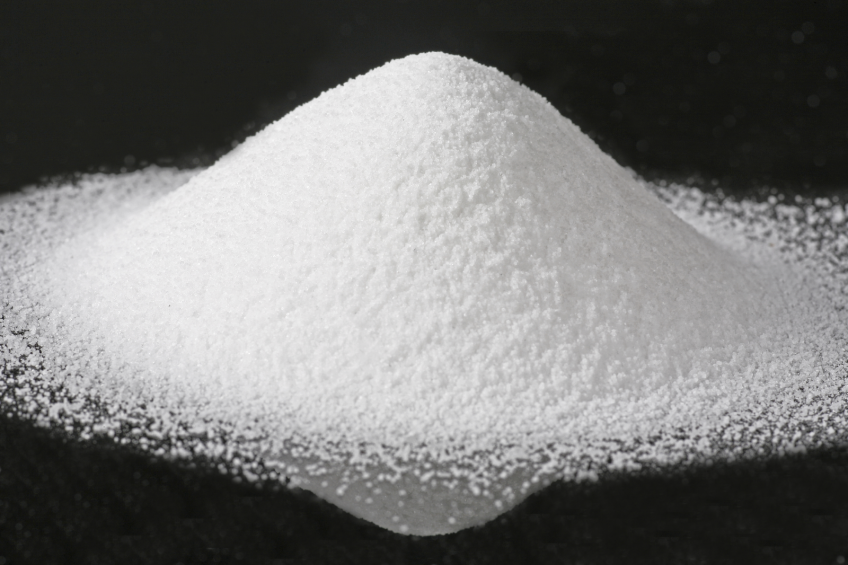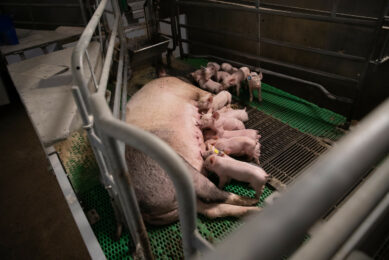Phytase, phytate and zinc – a complex interaction

It is well understood that phytase, phytate and zinc interact in a piglet’s gut. As superdosing a next-generation phytase degrades phytate, pharmacological levels may be marginally lowered for a good performance response.
By Dr Carrie Walk, Dr Casey Bradley, Dr Peter Wilcock, AB Vista; and Ian Wellock Primary Diets
The results of a series of piglet trials have highlighted the importance of the relationship between phytate, phytase and zinc in optimising the post-weaning piglet performance. The trials show how superdosing, defined as the application of high doses of a next-generation phytase (>1,500 FTU/kg), is targeting a near complete phytate destruction. Additionally, a maximisation of zinc utilisation is achieved without negatively affecting faecal scours.
A series of six piglet trials were conducted in Asia, UK and US to evaluate the impact of a third generation phytase (Quantum Blue, AB Vista) superdosing at differing dietary zinc concentrations, including pharmacological levels. All trials were conducted using the standard dietary and husbandry programmes typical of those regions. The results confirmed the benefits typically seen with use of phytase superdosing in improving average daily gain (ADG) and feed efficiency by 8% and 4%, respectively.
Dietary phytate
Phytate, the storage form of phosphorus in plant-based feed ingredients, binds minerals, including iron and zinc, rendering them unavailable for absorption by the animal. On average, piglet diets contain much less phytate than grower, finisher or sow diets due to the higher use of animal based raw materials. However, small changes in the phytate concentration of the diet can significantly impact growth performance. For example, increasing the dietary phytate concentration by only 0.16% can reduce ADG by 3% and feed efficiency by ten points, particularly in piglets seven to 14 days post-weaning (Figure 1).
This slight increase in dietary phytate could be the result of a 2 to 5% increase in the inclusion of high phytate grains, such as full fat rice bran or soybean meal, or the result of natural variation of the phytate concentration in grains (Figure 2). For example, the phytate concentration in commonly used feed ingredients such as corn, wheat or soybean meal can range between 10 to 30% from the average values. Therefore, even small incremental changes of dietary phytate can have a significant impact on piglet growth performance.
Low phytate nutrition
Through phytase overdosing, it is possible to reduce the concentration of phytate in the diet to levels below that of assay detection and successfully implement a low phytate nutrition programme; thereby improving ADG and feed efficiency in piglets. These performance benefits can in part be explained by an improvement in energy and amino acids utilisation, as well as mineral availability.
For example, superdosing phytase significantly increased the concentration of zinc in the serum of piglets (Figure 3) and may have implications towards optimising the use of pharmacological zinc.
It is common practice to include zinc oxide in piglet diets to combat post-weaning diarrhoea. However, the exact mechanism is yet to be determined and may incorporate any number of multifactorial approaches involving bacterial modulation, electrolyte balance and tight junction function or cell signalling. It is generally accepted that zinc from zinc oxide is poorly soluble and not available for absorption in the gastro-intestinal lumen.
However, increasing the inclusion of zinc from zinc oxide in piglet diets significantly increased the concentration of zinc in the serum (Figure 3) and tissues (Figure 4) of piglets. This would indicate zinc from zinc oxide is absorbed and stored in the tissues, to some extent, prior to secretion in the faeces. Therefore, part of the benefits associated with feeding pharmacological zinc may incorporate the absorption, storage and secretion of zinc from zinc oxide.
Chelator
Phytate is a potent chelator of zinc, particularly at a high concentration of zinc relative to phytate. Therefore, the binding potential of zinc and phytate may be very high in piglet diets. Through near complete phytate destruction, superdoses of phytase alleviates the negative effects of phytate on growth performance and improve zinc utilisation. This may allow for the potential reduction of pharmacological zinc oxide inclusion in the diet and optimisation of growth performance and zinc utilisation. Comparing ADG in the six different pig trials (Figure 5) relative to no additional zinc, phytase superdosing improves ADG by 30% in piglets fed between 1,750 and 2,500 mg/ kg zinc, while improving ADG by 21% in pigs fed between 2,500 and 3,500 mg/ kg zinc. This performance benefit associated with superdosing was achieved with an improvement or no change in faecal scour scores.
Therefore understanding the relationship between phytate, phytase and zinc is important in optimising the post-weaning performance of pigs with phytase superdosing and pharmacological zinc levels. Lower levels of pharmacological zinc (500 mg/ kg reduction) may be an option in the future to maximise post-weaning performance in the presence of phytase superdoses.
[Source: Pig Progress special – Piglet Health, 2014]











